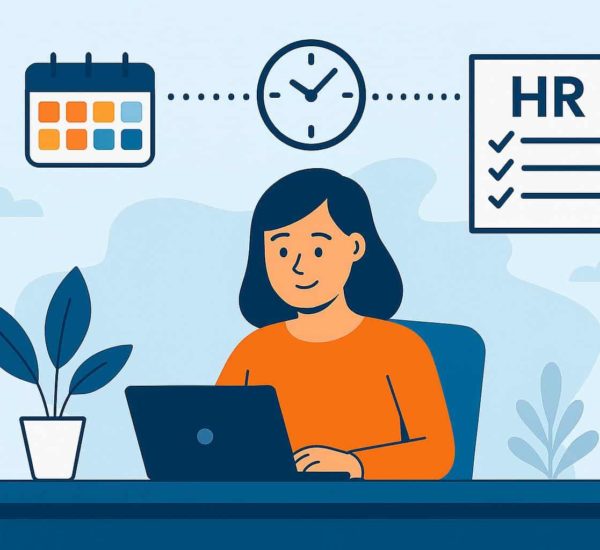Every organization dreams of a team that can adapt, persevere, and thrive in adversity. But in today’s fast-paced work environments, where challenges like market disruptions, tight deadlines, and workplace stress are the norm, building resilience in the workplace has become more critical than ever. So, what does it mean to have a resilient workforce?
It’s not about avoiding challenges but equipping employees with the tools, mindset, and support they need to tackle difficulties head-on. Resilience at work helps individuals and teams bounce back from setbacks, adapt to change, and emerge stronger. For organizations, this translates into higher productivity, stronger collaboration, and a more positive workplace culture.
In this guide, we’ll explore why resilience in work is essential for modern businesses, share proven strategies to build resilience at work and provide actionable tips for fostering a workplace environment that thrives under pressure. Whether you’re an HR professional, manager, or employee, these insights will help you cultivate a culture of workplace resilience that drives success—even in uncertain times.
Ready to transform challenges into opportunities? Let’s dive in!
What is Resilience?
Resilience is the ability to adapt, recover, and thrive in facing challenges. In the workplace, it empowers employees to handle stress, navigate change, and maintain productivity during tough times. A resilient team doesn’t just endure setbacks—they grow stronger and more innovative because of them.
Building workplace resilience involves fostering a supportive environment, encouraging adaptability, and equipping employees with the tools they need to overcome obstacles and thrive under pressure.

What is the Importance of Workplace Resilience?
Workplace resilience is critical for organizations aiming to thrive in today’s fast-paced, ever-changing environment. It ensures that employees can adapt to challenges, recover from setbacks, and maintain productivity during periods of uncertainty.
A resilient workforce fosters stronger collaboration, higher morale, and reduced stress, leading to improved performance and innovation. For organizations, this translates into lower turnover rates, a positive work culture, and the ability to remain competitive even in tough times.
Investing in workplace resilience not only benefits employees but also strengthens the organization’s capacity to weather challenges and emerge stronger. It’s a vital ingredient for long-term success and sustainability.
Enhanced Adaptability
Resilient employees can embrace change without feeling overwhelmed. Whether it’s adapting to new leadership, shifting goals, or unexpected disruptions, their ability to adjust ensures continuity and minimizes downtime.
Improved Problem-Solving
Resilience fosters a solution-oriented mindset. Employees are better equipped to think critically, remain calm under pressure, and devise innovative approaches to challenges, making them invaluable in dynamic environments.
Higher Productivity
Stress and adversity can hinder performance, but resilient individuals maintain focus and drive. This leads to consistent results, even during high-pressure situations, ensuring organizational goals are met.
Lower Stress and Burnout
By developing coping mechanisms, resilient employees can manage workloads and stress more effectively. This reduces the likelihood of burnout and fosters a healthier, more engaged workforce.
Stronger Collaboration
Resilience encourages individuals to support one another, share resources, and work collaboratively during tough times. This camaraderie strengthens team bonds and ensures mutual success.
Reduced Turnover
Organizations that prioritize resilience create environments where employees feel supported and capable of overcoming challenges, reducing turnover and retaining top talent.
Positive Workplace Culture
Resilience promotes a growth mindset within teams. Employees view setbacks as opportunities for improvement, leading to a more optimistic and empowered work culture.
Sustained Competitive Edge
A resilient workforce enables organizations to remain agile and proactive. They can respond effectively to market shifts, technological advancements, or unexpected crises, maintaining a strong position in competitive industries.
By investing in resilience, businesses create a foundation for long-term success, ensuring both employees and the organization can thrive in the face of adversity.
Examples of Resilience in the Workplace
Challenge
A project manager’s team faced a major client request for last-minute changes to a project, leading to a tight deadline and added pressure.
Response
The project manager remained calm and composed, reassessed the priorities, and communicated the changes effectively to the team.
Action
The manager motivated the team to work together, providing clear direction and support while maintaining a positive attitude.
Outcome
Despite the challenges, the project was completed on time, and the team was able to meet the client’s needs.
Result
The team learned valuable problem-solving skills, gained confidence, and demonstrated resilience in the workplace by adapting to the situation and emerging stronger.
What are Some Ways to Boost Resilience in the Workplace?
1. Foster Open Communication
Create a culture of transparency where employees feel safe sharing their concerns and seeking support. Regular check-ins and feedback sessions can help identify challenges early and build trust.
2. Encourage a Growth Mindset
Promote the idea that setbacks are opportunities for learning and growth. Celebrating effort and progress, not just success, can help employees build confidence and resilience.
4. Support Work-Life Balance
Flexible work options, wellness initiatives, and regular breaks can help employees recharge, maintain energy, and avoid burnout, which is key to long-term resilience.
5. Recognize and Reward Efforts
Acknowledge employees’ hard work, especially during challenging times. Recognition reinforces their value and motivates them to persevere through adversity.
6. Promote Peer Support
Encourage collaboration and team-building activities. When employees support one another, they create a network of resilience that enhances collective problem-solving and morale.
7. Lead by Example
To foster resilience in the workplace, leaders can set the tone by demonstrating resilience themselves. When employees observe their leaders handling challenges with confidence and managing stress effectively, they are more likely to adopt similar behaviors. Leading by example—whether through prioritizing tasks, tackling obstacles head-on, or staying composed in difficult situations—motivates employees to develop their own resilience at work.
8. Create a Supportive Environment
Provide resources like employee assistance programs (EAPs), mental health support, and access to tools that make tasks more manageable. A supportive environment empowers employees to thrive.
9. Encourage Self-Care Practices
Educate employees on the importance of physical and mental well-being, such as regular exercise, healthy eating, and mindfulness practices, which contribute significantly to resilience.
10. Set Realistic Expectations
Avoid overloading employees with unrealistic deadlines or demands. Clearly define goals and provide the tools and time needed to achieve them without unnecessary stress.

11. Offer Resilience Training
Providing resilience training helps employees develop skills to handle stress positively, face difficulties professionally, and bounce back after setbacks. You can bring in motivational speakers to inspire the team, or even organize peer-led presentations where colleagues share their own strategies for building resilience. Such sessions can be used to discuss the value of resilience, its role in the workplace, and practical ways to build this essential skill.
12. Understand Employee Needs
Managers can play a key role in helping employees build resilience by understanding their challenges and needs. By identifying the obstacles that employees face, managers can develop strategies to help them overcome these issues. Managers can gather insights through surveys, one-on-one meetings, or informal conversations, ensuring that each team member receives the support they need to strengthen their resilience and succeed in the workplace.
13. Embrace Failure
Acknowledging failure in a constructive way is essential for building resilience. Managers can create a culture where mistakes are seen as opportunities for growth rather than setbacks. By encouraging employees to learn from their errors, managers can help them move forward with a sense of motivation and determination. Accepting and overcoming failure is a crucial aspect of developing resilience within the workplace.
14. Offer Volunteering Opportunities
Volunteering for challenging tasks can help employees step out of their comfort zones and build resilience. Managers can incentivize these opportunities by offering rewards, such as extra paid time off, for employees who take on leadership roles or complex projects. By encouraging employees to embrace these challenges, managers help them develop skills that will support their personal and professional growth.
15. Provide Stress-Relief Resources
Offering stress-relief options can help employees recharge and build resilience by allowing them to manage stress more effectively. Consider implementing activities like wellness classes, support groups, or flexible work arrangements to help employees unwind. Activities such as playing relaxing music in break rooms or offering affirmations can also contribute to a calmer, more supportive work environment. When employees have access to these outlets, they’re better equipped to face workplace challenges with confidence and poise.
By integrating these strategies, managers can help build a more resilient workforce, equipped to thrive in the face of challenges.
Boosting resilience in the workplace isn’t just about managing crises—it’s about building a proactive, supportive culture that empowers employees to overcome challenges and grow stronger together.
To Sum Up Resilient Workforce
In conclusion, fostering resilience in the workplace is vital for creating a workforce that can navigate challenges with confidence and adapt to change. By building resilience at work, companies help employees develop the skills needed to recover from setbacks, manage stress, and stay productive during tough times. Strategies like setting a positive example, offering resilience training, and understanding employees’ needs can go a long way in boosting resilience across the team.
Ultimately, a resilient workforce is more engaged and better equipped to handle challenges, leading to improved overall performance and a more supportive work environment. Investing in workplace resilience not only strengthens employees individually but also drives business success in the long term.



